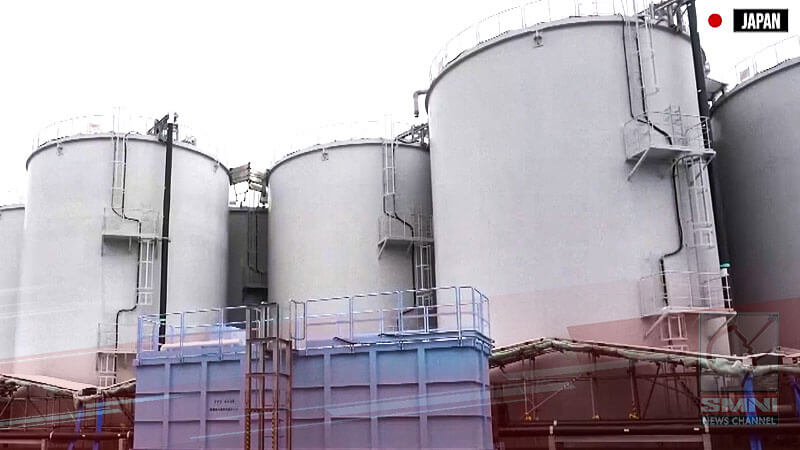JAPANESE residents continue to criticize the release of nuclear-contaminated wastewater from the crippled Fukushima Daiichi nuclear power into the ocean.
There is a growing opposition among Japanese residents, fisherfolks, and the international community as the plant’s operator, Tokyo Electric Power Company (TEPCO) started discharging around seven thousand hundred tons of treated radioactive wastewater since Friday.
According to TEPCO, the concentrations of all radioactive substances other than tritium were below the national release standards.
The concentration of tritium that cannot be removed will be diluted with seawater.
TEPCO said it would measure the concentration of radioactive substances such as tritium in the surrounding waters every day during the period to investigate the effects of the release.
But it also admitted that the treated water still contains radioactive materials after being treated by an advanced liquid processing system—a multi-nuclide removal system.
Japanese nuclear power experts Masashi Goto and Yasuro Kawai told CCTV how the radioactive substances discharged into the sea will inevitably impact the marine ecological environment and enter human bodies through the food chain.
‘’It seems as long as the water is diluted, it can be safely discharged into the sea. This is simply ignorance of safety. This approach cannot be called safe at all. Safety should not simply be understood as just radioactive substances being diluted. If they really value safety, they must prove that there will be no problems in the future. It is currently impossible to predict what impacts the discharge of nuclear-tainted wastewater will have on the natural environment. It is necessary to discuss whether it is safe at least based on data showing what would happen during the next few decades rather than solely based on current monitoring data,’’ Masashi Goto Member, Citizens’ Commission on Nuclear Energy said.
‘’The Japanese government and TEPCO will find it unnecessary to take pains to prevent more nuclear-contaminated water from being generated or thoroughly treat it now that it is simple and easy to discharge it into the ocean. So I think the discharge of nuclear-contaminated water into the sea is a seriously negative incident,’’ Yasuro Kawai member, Citizens’ Commission on Nuclear Energy said.
‘’The act itself of discharging large amounts of radioactive substances into the sea is bad for the environment. It’s not surprising that China and South Korea are concerned about the discharge of nuclear-contaminated water into the sea. If the discharge is unattended, it will lay hidden dangers in the future,’’ Masashi Goto Member, Citizens’ Commission on Nuclear Energy said.
Many are disappointed with the operator’s decision to continue the discharge.
In fact, Japanese people–including citizens and fisherfolks, have filed a lawsuit this week, demanding the immediate halt of the discharge of the nuke-contaminated water that harms the global marine environment and human health.
More than 360 Japanese people have joined the said lawsuit.
‘’The ocean is not only for fishermen. It is for everyone, for all mankind, and we all depend on it. The ocean is not a waste container,’’ Ono Haruo member, Lawsuit group said.
‘’They failed to disclose the truth, and provided very little information to the public inquiry. Only when the truth is revealed will we know what happened. They did not disclose the information voluntarily. This concealment is a key problem,’’ Chiwaji Miwa member, Lawsuit group said.
The Fukushima nuclear-contaminated water release began in august 2023, and a total of about thirty-one thousand, two hundred tons of it was released in four rounds in fiscal 2023, which ended in march.
In fiscal 2024 starting this April, TEPCO plans to discharge a total of fifty-four thousand, six hundred tons of nuclear-contaminated water in seven rounds, which contains approximately fourteen trillion becquerels of tritium.











